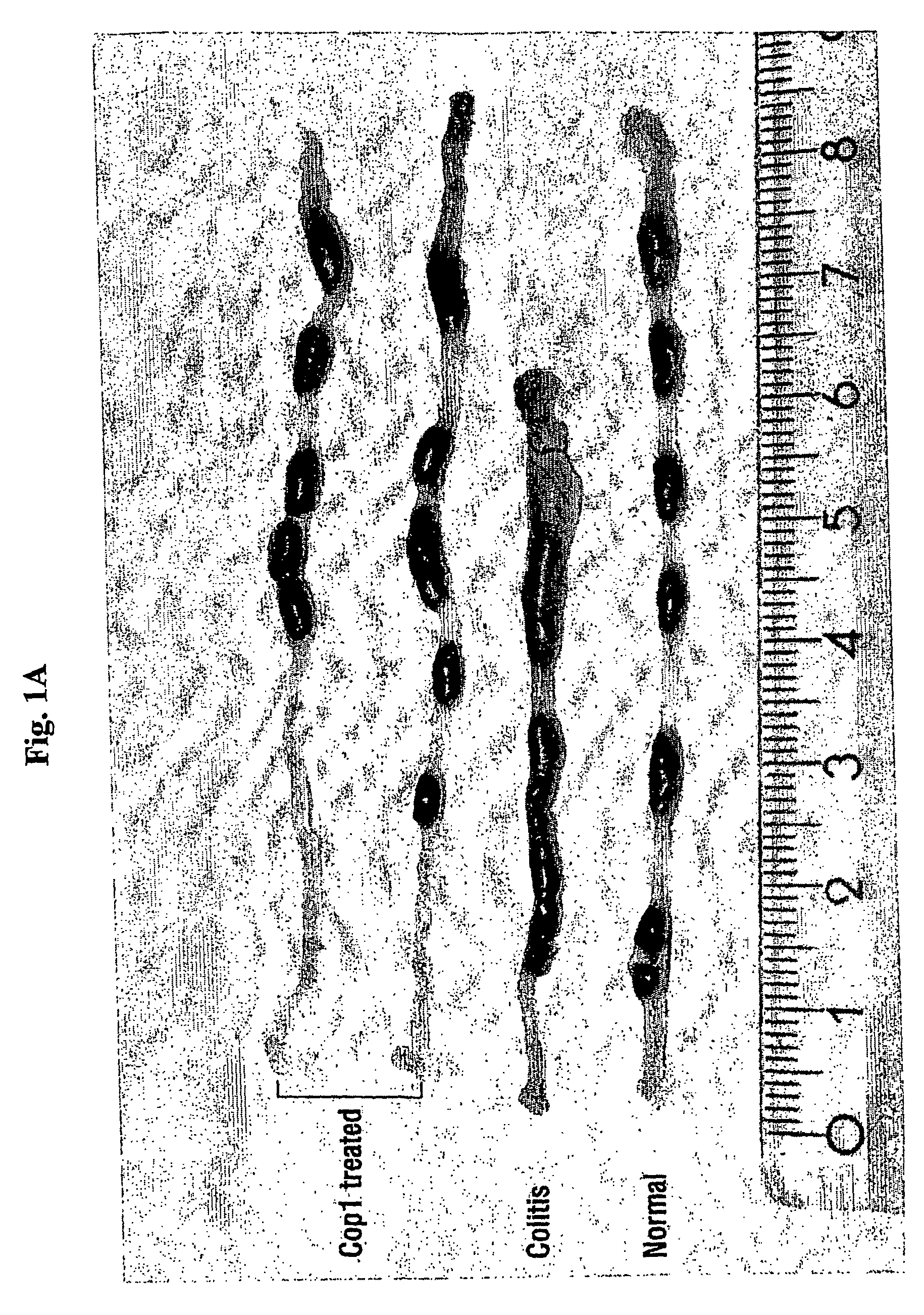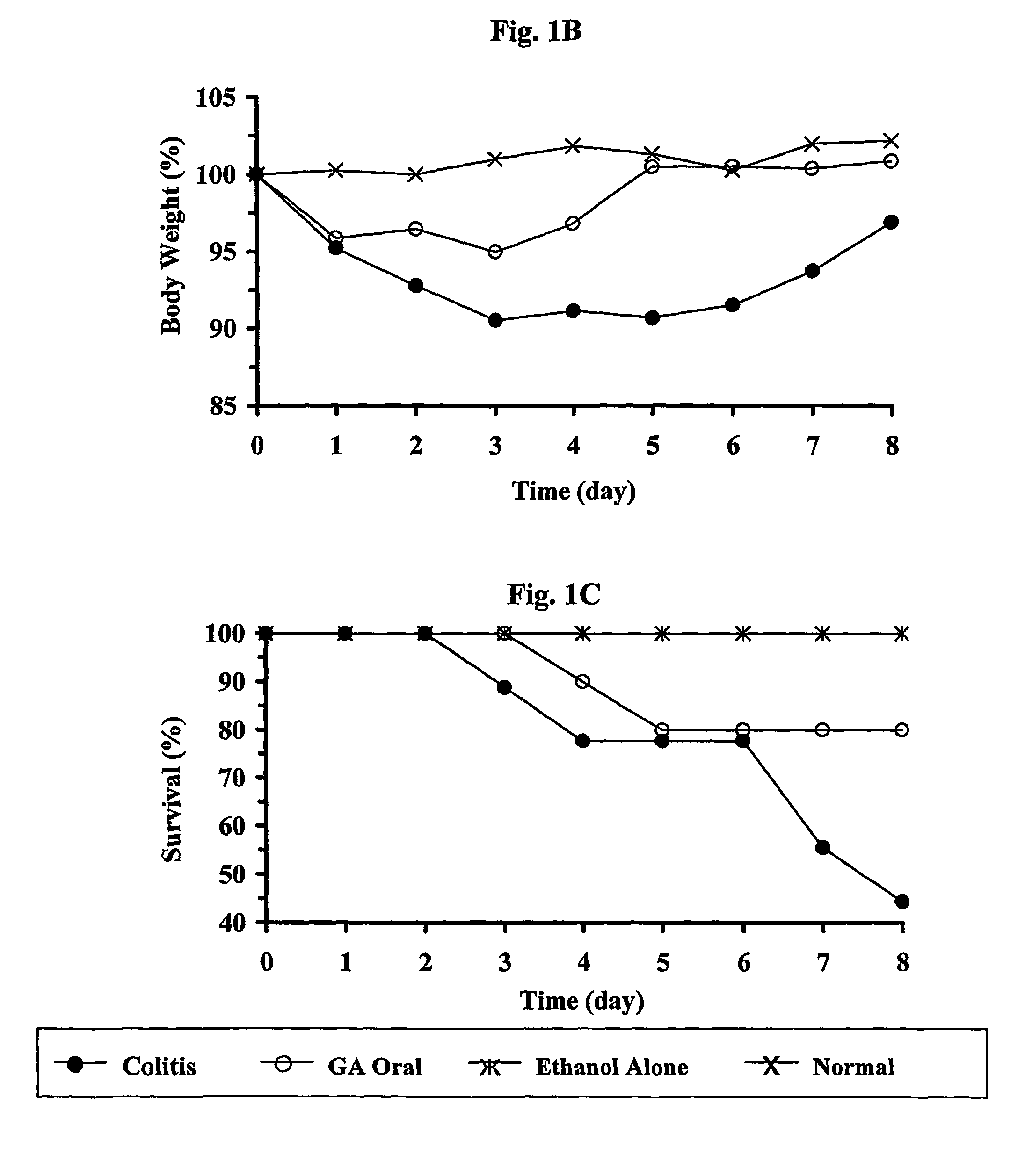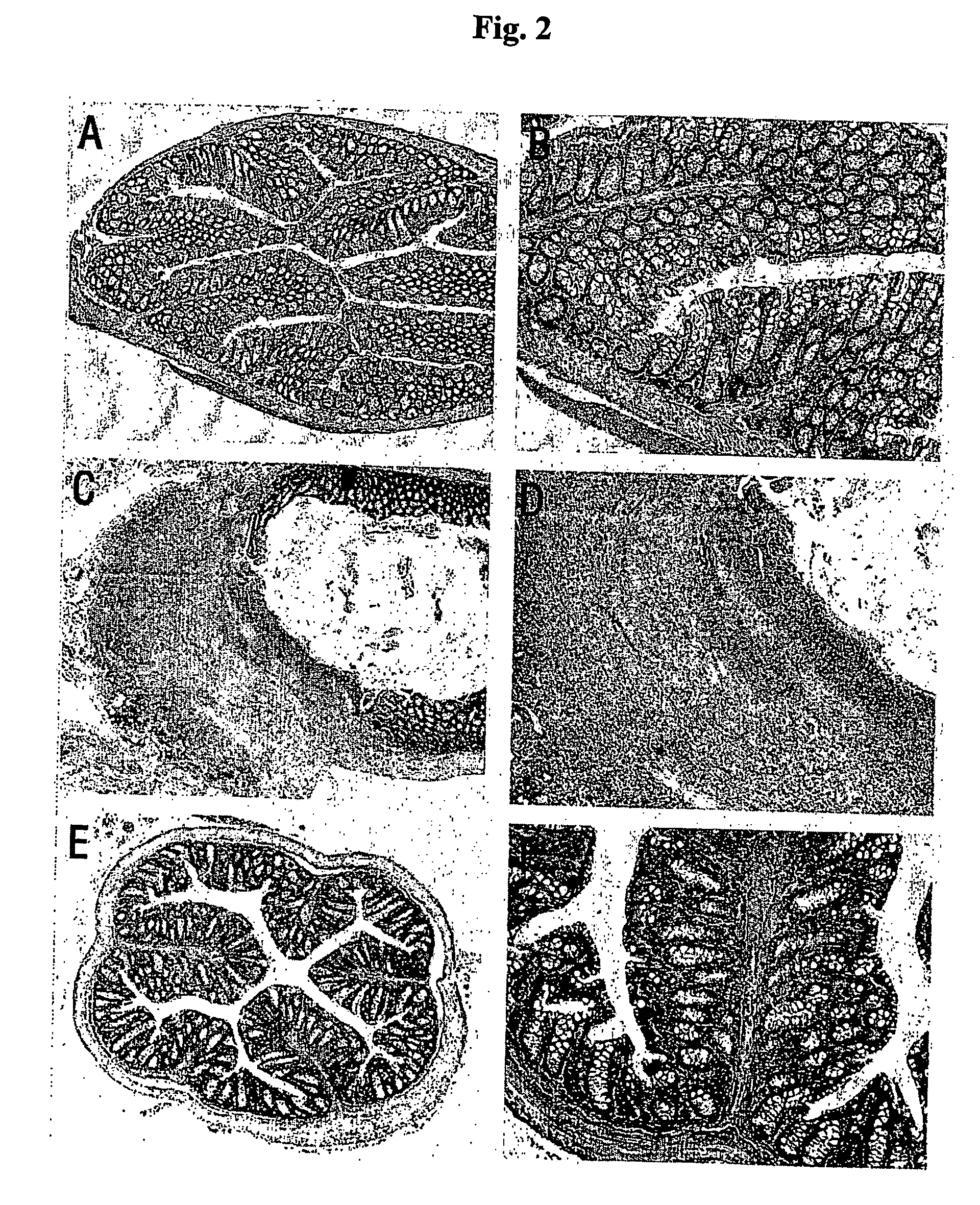Cop 1 for treatment of inflammatory bowel diseases
a technology for inflammatory bowel disease and a pharmaceutical composition is applied in the field of pharmaceutical compositions and methods for the treatment of inflammatory bowel disease, which can solve the problems of difficult control, no evidence of a definite role for one infectious agent, and a burden on the health care system
- Summary
- Abstract
- Description
- Claims
- Application Information
AI Technical Summary
Benefits of technology
Problems solved by technology
Method used
Image
Examples
example 1
Effect of Oral Treatment of Cop 1 on TNBS-Induced Colitis in BALB / c Mice
[0064]Colitis was induced by TNBS in 50% ethanol. GA was administered orally (250 μg / mouse per feeding) every other day, starting either seven or three days before induction of disease, at the day of induction, as well as two days after the induction, and was continued as indicated in Table 2B below, left row. Colonic scoring was performed 7 or 8 days after disease induction. Mice that died during the first 2 days (usually around 20% in all groups) were considered as treatment casualties and thus are not presented; each group contained 4-7 mice that survived after day 2.
[0065]The first set of experiments tested the ability of orally administered GA (250 μg / mouse, at alternate days, starting 7 days before disease induction, 8 feedings) to ameliorate experimental TNBS-induced colitis in BALB / c mice. Macroscopic evaluation of colons from GA fed, versus those of control mice, in three different experiments, revealed...
example 2
Effect of Various GA Treatment Modes on TNBS-Induced Colitis in Different Mouse Strains
[0071]To explore whether the beneficial effect of GA on TNBS-induced colitis is restricted to oral administration in the BALB / c strain or represents a more general effect, we studied the ability of GA administered by different routes and dosages to inhibit TNBS-induced colitis in two additional strains of mice. Hence, the effects of oral treatment (250 μg / feeding, at alternate days, starting 7 days before disease induction); a single injection of a depot dose (5 mg / mouse subcutaneous (SC) in ICFA, 14 days before induction); or daily injections (2.5 mg / mouse SC in PBS, starting either 7 or 14 days before induction) were tested in the SJL / J strain and the F1 hybrid strain of SJL / J and BALB / c-(SJL / JxBALB / c)F1.
[0072]Macroscopic evaluation of the colons, as summarized in Table 3, revealed that, similarly to the BALB / c strain, both strains are highly susceptible to TNBS colitis (100% disease incidence i...
example 3
The Effect of GA on Lymphocyte Reactivity of TNBS-Induced Colitis
[0076]To investigate the effect of GA treatment on the T-cell reactivity in TNBS-induced colitis, we studied the cell proliferation response and the secretion of the cytokines TNF-α and TGF-β in the colitis-induced mice treated with GA, as compared to the untreated mice. The reactivity of spleen cells—systemic response, as well as the reactivity of the local mesenteric lymph nodes (MNL), adjacent to the diseased organ, were analyzed in the three mice strains. The proliferation in response to colonic extract obtained from normal syngeneic mice (CE) and to GA, is demonstrated in FIGS. 4A-4F. A prominent proliferation response to colonic extract was demonstrated by MLN cells, i.e., 8.9, 2.0 and 3.3-fold in colitis induced mice over the response of normal MLN, in BALB / c (FIG. 4B), (SJL / JxBALB / c)F1 (FIG. 4D) and SJL / J (FIG. 4F), respectively (P4C, 4E). This local response to the colonic extract was markedly inhibited by GA ...
PUM
| Property | Measurement | Unit |
|---|---|---|
| molar ratio | aaaaa | aaaaa |
| molar ratio | aaaaa | aaaaa |
| molar ratio | aaaaa | aaaaa |
Abstract
Description
Claims
Application Information
 Login to View More
Login to View More - R&D
- Intellectual Property
- Life Sciences
- Materials
- Tech Scout
- Unparalleled Data Quality
- Higher Quality Content
- 60% Fewer Hallucinations
Browse by: Latest US Patents, China's latest patents, Technical Efficacy Thesaurus, Application Domain, Technology Topic, Popular Technical Reports.
© 2025 PatSnap. All rights reserved.Legal|Privacy policy|Modern Slavery Act Transparency Statement|Sitemap|About US| Contact US: help@patsnap.com



